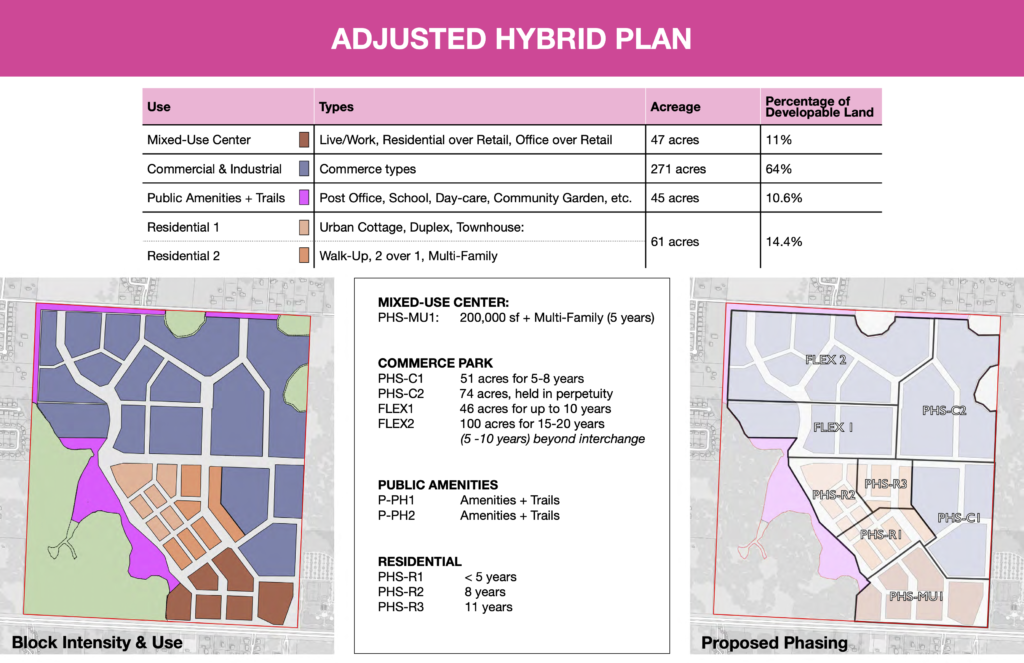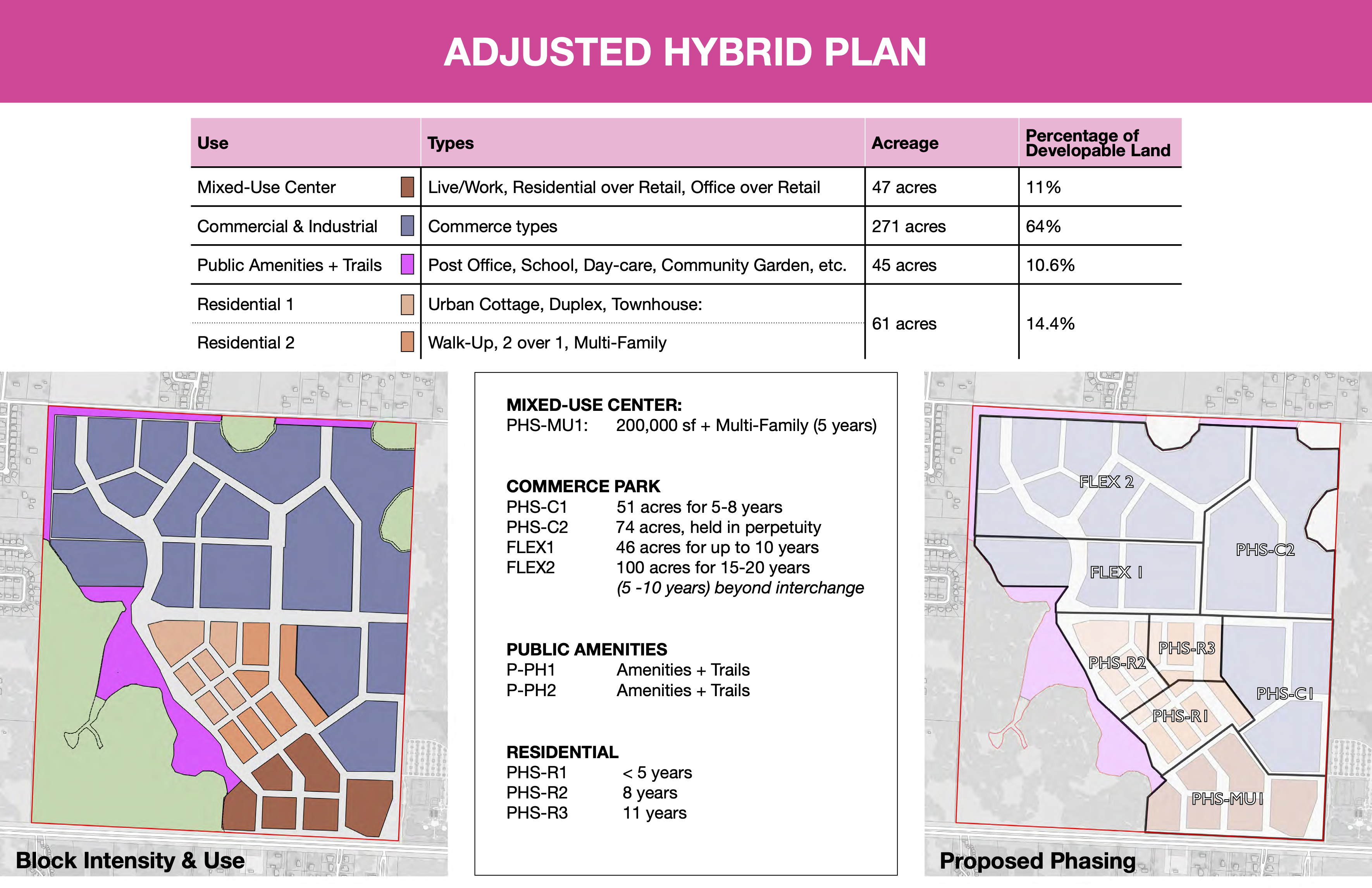Earlier this month, Commissioner Robert Bender convened a meeting of some OLF-8 stakeholders regarding the future of the Master Plan process. That meeting was attended by Commissioner Bender, Scott Luth of Florida West, Lewis Bear of the Pensacola-Escambia Development Commission, Keith Hoskins of Navy Federal, and members of the DPZ team.
The purpose of the meeting was to develop a framework for a compromise plan on OLF-8, and we applaud Commissioner Bender for his leadership as Chairman of the Commission to bring this meeting forward.
Four Charrette Plans
As you may recall, the DPZ Team developed four master plan scenarios over the course of the last several months, including the ten-day virtual charrette engagement. Those four plans represented a wide range of ideas, goals, and emphases for the property.
- The Commerce Park plan focused almost exclusively on industrial and commercial uses, with a small area of retail and office space, and a handful of multi-family residential units.
- The Market Plan was ranked as the top choice by the DPZ Team as the highest and most valuable use of the land. That plan emphasized residential development, recreational and civic space, and still preserved 92 acres for targeted job creation along with a town center for retail and amenities.
- The Village Plan was the top choice of charrette participants, which created large swaths of undeveloped areas or minimally developed “farmsteads” in addition to a 70-acre commercial area and a town center for shopping, dining and civic uses.
- The Greenway Plan was the fourth plan developed, and created a unique layout and combination of uses, with a more aggressive allocation for commerce uses. This plan also scored well during the charrette, but due to the offset street grid, the team felt that this option would be the most difficult to achieve from a transportation and connectivity standpoint.
Post Charrette – A Compromise Plan
However, as these four plans were moved forward to the County Commission, it became apparent that none of the plans would muster majority support of the board. At that point, and at Commissioner Bender’s request, we began to discuss some options for a compromise plan, which would allow for private-sector retail and town center development, some residential space to support the retail areas, and significant acreage allocated for job creation.

In addition, the team explored the idea of integrating time limits and phasing triggers into the development plan. This would create flexibility into the future, so that space would be preserved for longer-term needs such as job creation and commerce, but it could also be revisited and re-evaluated for other market opportunities at a date certain.
The phasing triggers would also help to guide future land-use decisions by setting timeframes for additional development, once certain milestones were achieved on the site. This would create a flexible and market-responsive roadmap for the future of OLF-8. View the presentation here.
How Much Land for Jobs?
One of the critical and lingering questions during this process has been the amount of space that should be allocated for targeted jobs. The UWF Haas Center performed an economic impact analysis which modeled the effects of 1,000/2,000/3,000/4,000 jobs on OLF-8. Not surprisingly, the data shows a significant economic impact for each targeted job created. On average, for every 100 targeted, high-wage jobs created, there are another 60-80 additional jobs created as a result.
These numbers certainly make the case for a robust job-creation effort on OLF-8, the primary goal of this project. The question for our team has always been, how much land is required to create these jobs? Our analysis of multiple different industries indicates that 1,000 jobs can fit on anywhere from 9 to 72 acres, depending on the job type.
This means that every master plan scenario we designed can accommodate at least 1,000 jobs at the largest warehouse level, and thousands more jobs at the smaller, more technical levels. In addition, many of these employers with higher jobs-per-acre are also the companies that pay higher wages and support broader economic growth.
Moving Forward…We Hope
The DPZ Team is encouraged by the initial responses by stakeholders and members of the Commission to the compromise plan, which we are calling the Hybrid Plan.
However, our commitment is, and always has been, to be an honest broker and advisor to both the County Commissioners AND the community. Our scope of work, as well as our own internal beliefs, place a high value on public engagement and public interaction.
Thus, we are hosting a Virtual Town Hall on March 2, at 6:00 p.m. for members of the public to share their ideas, opinions and suggestions on this new plan. This presentation is outside the scope of our contract, but we are donating our time to prepare, promote, and present this new plan so you will have the chance to be heard. Click here to register.
On March 11, 2021, the Board of County Commissioners will meet again and discuss the OLF-8 Master Plan as well as the future of this project. We are hopeful that the BCC will continue to support the work of the Master Plan team and the public’s engagement in this project.

